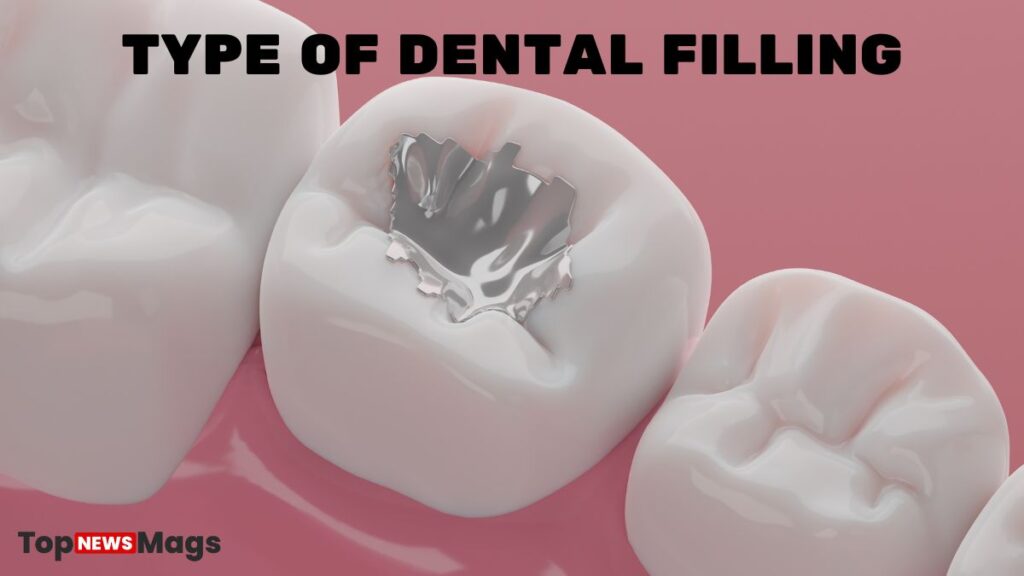When looking for a better dental filling, there are many options, each with benefits and drawbacks. The best type of dental filling can be selected by focusing on factors like cavity area, budget, needs, etc.
In this guide, I will explain which type of dental filling is better for you and show you how to choose the right one according to your needs.
Types of Dental Filling
1. Silver Amalgam Fillings
Silver amalgam fillings are made from various materials, such as silver, mercury, tin, and copper. They have been used for over a century and are known for their durability.
Pros:
- Durable: Can last 10-15 years or more.
- Strong: Ideal for back teeth that go under a lot of pressure.
- Affordable: Less expensive than other types of fillings.
Cons:
- Aesthetic: Noticeable silver colour, which looks ugly, especially for front teeth.
- Mercury Content: Mercury contains a small amount of mercury, which some people prefer to avoid, although the American Dental Association (ADA) considers it safe.
Best For:
Patients are looking for a long-lasting, affordable option for cavities in the back teeth.
2. Composite Fillings
Composite fillings are made from plastic resin and finely ground glass particles. They are designed to match the colour of your natural teeth, making them a good choice for visible areas.
Pros:
- Aesthetic: Blends in with the natural tooth colour, making them ideal for front teeth or visible areas.
- Versatile: Composite fillings repair broken teeth by filling in cavities.
- Bonding: Bonds directly to the tooth, providing an additional protective layer.
Cons:
- Durability: It is not as long-lasting as amalgam filling and normally lasts 5-10 years.
- Cost: More expensive than amalgam fillings.
- Prone to staining: It can cause stains over time if exposed to coffee, tea, or tobacco.
Best For:
Patients who prefer aesthetics, especially for front teeth or visible areas.
3. Ceramic Fillings
Ceramic fillings are made from porcelain, which is the most aesthetic option. They are tailored in a lab or used for larger fillings or crowns.
Pros:
- Aesthetic: Match the natural colour of your teeth better than composite fillings.
- Durable: It can last 10-15 years or more when properly cared for.
- Non-Metal: An excellent option for those who don’t like metal fillings.
Cons:
- Cost: It is the most expensive option due to the custom fabrication process.
- Brittleness: Ceramic fillings can be more breakable than composite or amalgam, especially under pressure.
Best For:
Patients are looking for a natural, durable filling for larger cavities.
Read Also: Essential Health and Skin Care Products You Should Know About
4. Gold Fillings
Gold fillings, also called inlays or onlays, are made from a gold alloy and are custom-made in a dental lab. They are known for their durability and strength.
Pros:
- Durable: Gold fillings can last over 15-30 years, making them one of the longest-lasting filling options.
- Strong: Resists chewing forces very well.
- Biocompatible: Gold is supported by the gums and does not rust.
Cons:
- Cost: One of the most expensive filling materials.
- Aesthetic: The gold colour is visible, which some patients do not like.
- Multiple Visits: Requires at least two visits to complete the procedure.
Best For:
Patients looking for a long-lasting, strong filling material are less concerned about aesthetics.
5. Glass Ionomer Fillings
Glass ionomer fillings are made from a blend of acrylic and glass. Over time, they release fluoride, which can help protect the tooth from rot and spoilage.
Pros:
- Fluoride Release: It can help protect teeth from additional decay.
- Suitable for Children: Often used in children’s teeth and for small cavities.
- Cost-Effective: Generally more affordable than composite or ceramic fillings.
Cons:
- Durability: It is less durable than other types, typically lasting only five years.
- Aesthetic: Not as natural-looking as composite fillings and can appear dull.
Best For:
Patients with a high risk of tooth decay or cavities in partition areas, like around the gum line.
Which Filling Is Right for You?
Factors to Consider:
Location of the Filling: Amalgam or gold fillings are often more durable for back teeth that suffer more pressure. Composite or ceramic fillings offer a more natural look for visible teeth.
Budget: Amalgam and composite fillings are more affordable, while gold and ceramic fillings are more expensive.
Durability: If longevity is your priority, gold and amalgam fillings are the most durable, while composite and glass ionomer fillings may need to be replaced first.
Aesthetic Preferences: If appearance is a concern, composite and ceramic fillings are designed to match your natural tooth colour, making them a better choice for front teeth.
Conclusion
The best type of dental filling depends on your specific dental needs, budget, and personal preferences. Composite and ceramic fillings offer aesthetic advantages for visible teeth, while amalgam and gold fillings provide superior durability for molars. Consult with your family dentist to determine What Type of dental filling is right for you.


